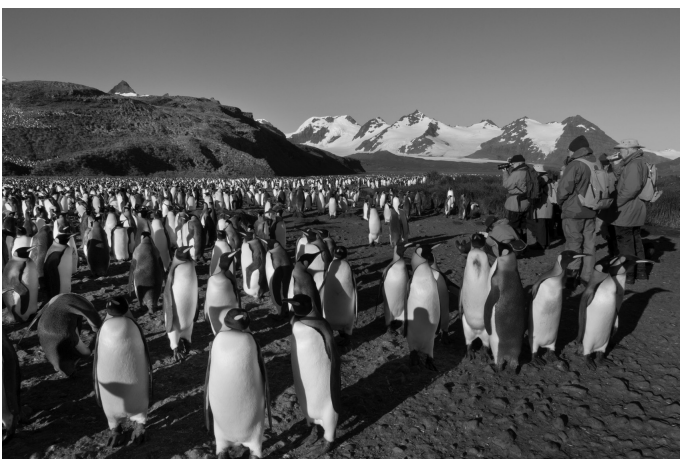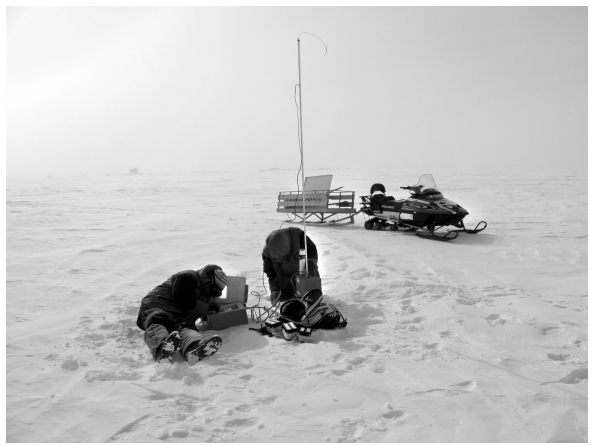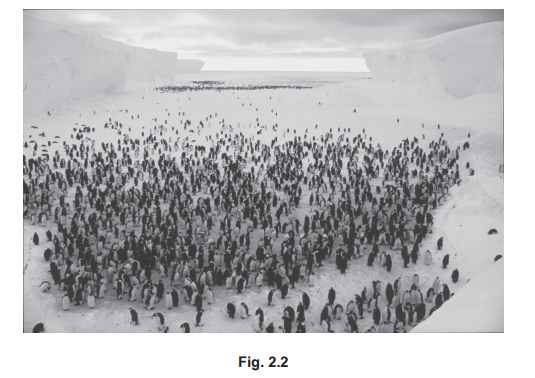The Antarctic Treaty was originally signed by 12 nations in 1959. The treaty has now been signed by 53 nations.
The Antarctic Treaty refers to Antarctica as:
‘… a natural reserve, devoted to peace and science’.
Agreements within the treaty relate to:
protection of the Antarctic environment
designation and management of protected areas
management of tourism
freedom of scientific investigation
scientific cooperation.
Figs. 2.2, 2.3 and 2.4 show human activities within the area covered by the Antarctic Treaty.
Fig. 2.2 shows tourists visiting a king penguin colony
Fig. 2.2
Fig. 2.3 shows scientists carrying out research in the Antarctic. Researchers use vehicles powered by a fossil fuel to cover the large distances in the Antarctic.
Fig. 2.3
Fig. 2.4 shows a meteorologist using a weather balloon. A monitoring device is attached to the balloon, which is released into the atmosphere. The device sends meteorological information back to a computer.
Fig. 2.4
(i) Evaluate the success of the Antarctic Treaty in managing the impact of human activity in Antarctica. Refer to evidence from Figs. 2.2, 2.3 and 2.4 in your answer.
[6]
(ii) There are deposits of coal in Antarctica.
Mining is prohibited by the Antarctic Treaty.
Suggest two other reasons why these coal deposits are not mined.
[2]




